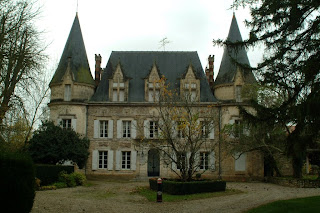London UK - METROPRESS, the publishers of
Antiques Trade Gazette and owned by the
Daily Mail (DMG), has been taken over by a management buyout team of Anne Somers (managing director), Mark Bridge (editor-in-chief), Simon Berti (sales director), Pablo Luppino (finance director), and an additional director with an IT bias, Bob Fairchild from geo online info group Landmark, a former Matrix client itself now owned by DMG.
Word on the street is that profitability of the ATG is down, with costs rising and auction ads sales falling, which is why DMG moved to divest itself of ATG, as well as some of its US niche antique publications. ATG has turned from passive auction advertising and news, to providing printed auction catalogues and now software for auction houses live auctions with thesaleroom.com. More recently ATG has set up another division providing software for general auction sales with i-bidder.com.
The buyout was supported by HSBC and Matrix venture capitalists. ATG's turnover is £6m with staff of 53. Matrix normally buys businesses worth between £5m and £20m and has taken less than half the equity of the new venture. DMG employs 16,000 with £2bn worldwide turnover from newspapers, magazines, TV, radio and trade shows, including Newark antiques fair, Ardingly, Shepton Mallett etc. The DMG ATG deal does not include the antique fairs, which over the years have also been rumoured to be losing money.
DMG gave as a reason for the sale that 'ATG is no longer strategically aligned with our long term objectives'.
MATRIX GROUP PRESS RELEASE:
MBO OF METROPRESS LTD
3rd October 2008: Matrix Private Equity Partners (MPEP), the small buyout specialist, has invested into the MBO of Metropress Limited (‘Metropress’). Metropress publishes the Antiques Trade Gazette (‘The Gazette’), the leading weekly newspaper that provides the latest in market information, news and analysis to art and antiques trade professionals and collectors in the UK. Acknowledged as the ‘Bible’ of the fine art and antiques industry, The Gazette is a newspaper for serious buyers and sellers. MPEP has taken a significant minority stake in the business.
Based in London and Chelmsford, Metropress was established by a journalist in 1971, in order to launch The Gazette. The first publication to serve the antiques trade, it provides an accurate, balanced and impartial view of the art and antiques business and over this time, has built up a degree of prestige and trust unrivalled by other publications. As the first choice publication for auction industry advertising, The Gazette also publishes advertising for fairs, galleries, packers, shippers, insurers, career opportunities and a host of other services.
In 1994, Metropress was acquired by Daily Mail and General Trust PLC (‘DMGT’), and since then has largely been left to its management to run as a stand alone business, with DMGT supplying some central services. In 2000, Metropress leveraged its existing auction house relationships by offering to manage their catalogue printing requirement. This has now been extended to offer an on-line option. In 2006, management launched the idea of Live Auctions, in order to address the potential offered by the internet. The business currently employs 53 people and its annual revenue is in excess of £6 million.
The strong management team that has been responsible for implementing the transition of the business from a paper-based publisher to one with an on-line presence, will be further augmented by the introduction of one of MPEP’s Operating Partners, who has significant experience in the sector. MPEP has introduced Bob Fairchild as investing Non-Executive Chairman to the management. Fairchild is particularly suited to the deal, having previously been Managing Director of a successful joint MPEP and 3i investment, Landmark Information Group, which was sold to DMGT.
Anne Somers, Managing Director of Metropress said: “Matrix Private Equity Partners’ supportive backing combined with Bob Fairchild’s expertise and vision will really help to exploit the potential of the business. We very much welcome the investment by MPEP.”
Jonathan Gregory of Matrix Private Equity Partners said: “Whilst we recognise that advertising spend may in the short term be susceptible to the prevailing economic environment, the transaction is modestly geared and we have built in protection to ensure that the VCT’s receive their yield. This, strengthened by the involvement of Bob Fairchild as Non-Executive Chairman, and a management team that has delivered strong profit and cash generation for its current owner and Metropress, means that the business is well placed to deliver further growth.”
- Ends –
Advisors:
Matrix: Baker Tilly (London) – Stephen Mason and Kurt Tiedt, accounting due diligence
PBD Consulting (London) – Lisa Whelan, commercial due diligence
Marriott Harrison (London) – Duncan Innes, Jonathan Leigh-Hunt, Ben Devons, Hugh Gardner, Rebecca Briam and Chloe Hymas (legal)
Management: Vantis Corporate Finance (London) – Philip Marsden, Francesca Granelli and Mathew Lunn (corporate finance)
Lewis Silkin (London) – Philip Lamb and Nadim Khan (legal)
Bank: Pinsent Masons (Birmingham) – Victoria Baker (legal)
Matrix Private Equity Partners – Jonathan Gregory, Eric Tung
For further information, please contact:
Equity Dynamics
Corinna Vere Nicoll 07825 326 440
Jane Kirby 07825 326 441




































